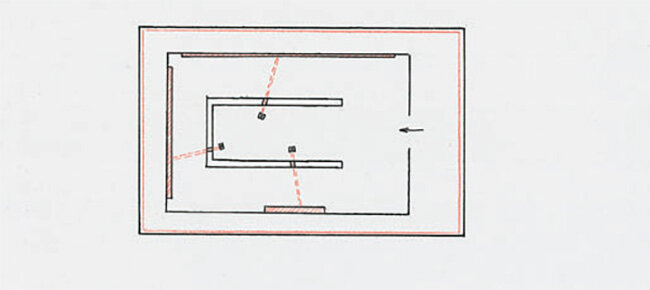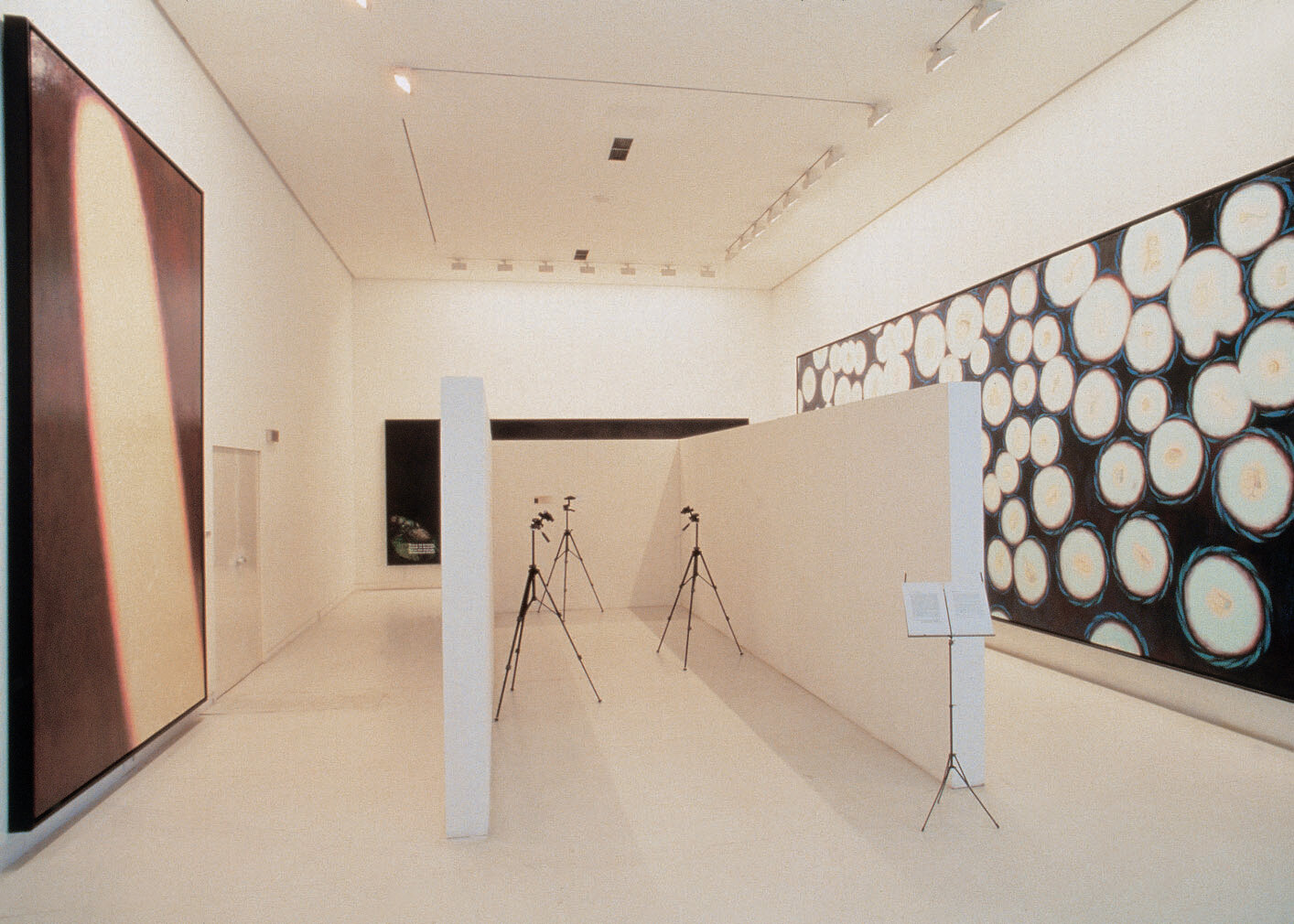Three Nights
YEAR: 1989
CATALOGUE NUMBER: 23
PROVENANCE
Collection of the artist.
EXHIBITIONS
YEAR: 1989
CATALOGUE NUMBER: 23
PROVENANCE
Version 1
Galerie de France, Paris, France
Ilya Kabakov. Que sont ces petits hommes? 19 January – 4 March 1989
Institute of Contemporary Art, Philadelphia
Ilya Kabakov. Who Are These Little White Men? 14 Dec 1989 – 28 Jan 1990
Version 2
Kunst im 20. Jahrhundert, Martin-Gropius-Bau, Berlin
Die Epoche der Moderne, 7 May – 27 July 1997
Center for Curatorial Studies Museum, Bard College, Annandale-on-Hudson
Ilya Kabakov: 1969-1998, 23 June – 3 September 2000
Tate Modern, London, UK Museum
Ilya and Emilia Kabakov, Not Everyone Will Be Taken into the Future, 18 Oct 2017 – 28 Jan 2018
The State Hermitage Museum, St Petersburg and the Tretyakov Gallery, Moscow
Ilya and Emilia Kabakov, Not Everyone Will Be Taken into the Future, 2018
DESCRIPTION
It is a large and high dwelling (12 x 8 x 6 meters). There are three paintings, one on each of the light-yellow, almost white, walls. A vertical painting (368 x 226 cm) hangs on the left; a large horizontal one (224 x 590 cm) is in the center, and on the right of it is also a horizontal one (320 x 808 cm). There is neither a name nor an inscription either on the paintings themselves or near them. It is not clear what they are called or who did them. But glazing was used in their preparation, so it seems that they could have been made a long time ago. Night is depicted in all three paintings. On the right, vertical painting, the night is parting to both sides, similar to a black curtain. We see lots of people walking around in the light space that opens as night parts to the sides, but it is as though we are viewing this from above, from a birds-eye-view, and so only the shoulders, heads, and noses can be seen.
In the second painting, there is a large beetle sitting on a green leaf in the lower left corner, while the entire space of the painting is almost black – night. Children’s verses, or rather verses for children, are written in neat handwriting along the entire length of the lower edge, on top of the ‘night.’
In the third painting, a night sky is depicted, covered with stars. There are household articles (a cup, a plate, a meat-grinder) in the light-golden middle of each star. Each star has its own object.
There is a partition built from three walls in the center of the room, and the viewer can freely enter it. There is a square hole in each of the walls at eye-level. Binoculars through which the viewer may look are placed opposite the hole. On the front part of the partition, there is an explanatory text and the same kind of text next to each hole. It follows from the explanations that figures of little white people began to appear in different places on each of the three paintings, even before they wound up at the exhibit. But it is impossible to see them on the surface of the painting with the naked eye; they are visible only through the binoculars.
ARTIST`S COMMENTS
The problem which has always disturbed and bothered me, and which seemed to be unsolvable, is the difference between knowledge which you can get from books, from one’s own life experience, from conversations, from one’s own ruminations, and that which descends upon you ex nihilo, suddenly and coincidentally, and moreover that is of such ‘quality’ that to compare it with acquired knowledge is simply funny and ridiculous.
It is of a completely different sort, of a different ‘composition.’ It cannot be analyzed in the usual way, broken down into parts, comprehended logically. In essence, it is also impossible to use it in this life. Its appearance is just like its meaning – a completely unsolvable mystery.
What, strictly speaking, should be done with it? You can – and must – live with the first kind of knowledge. But it is absolutely unclear what to do with the second kind. It remains a sign, a reminder of something about something. But of what and about what?
All that has been spoken about above, especially when it arises in vivid, distinct images, is usually called ‘mystical propensities.’ A person suddenly receives a signal from some mysterious source, a ‘vision,’ and then he tries to communicate it to others. Similar ‘visions’ have supposedly visited artists many times. Notes and vague evidence attesting to this have been preserved. Many paintings, so it is said, represent the reproduction of such ‘visions.’ Detailed stories about how such paintings came to be, with what miraculous speed they were created, runs through the entire course of art history.
Gogol speaks beautifully of such a state in The Overcoat: “Our hero was in that very most pleasant situation for a Russian when you don‘t think about anything and thoughts just creep into your head.”
And I found myself in such a state a few times when two or three such images would ‘descend’ upon me.
The ‘image,’ arriving suddenly and who knows from where appears to be extraordinarily real, it is clearly visible in each of its details, as though it is being illuminated by the bright light of day. The super-insistent need to write it down or to draw it is communicated to you along with the ‘image.’ It’s as though a dose of energy is being conveyed to you which is specifically intended for the fulfillment of this task.
It is a strange, confusing, frightening state. It’s as though someone is shoving something, slipping material into your hand, trying to see to it that all opportunities are created for it to make an impression on your memory. It is a sweet and at the same time frightening feeling that you are succumbing to someone else’s will which bears a superhuman impulse…
But later, when your work is finished, all of this goes away somewhere, disappears, and you return to your usual endeavors, remembering only that something strange and confusing happened to you.
Images
Literature









